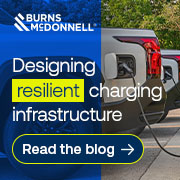Critiquing Clean Power

Carbon dioxide is filling up courtrooms and boardrooms - even as the Environmental Protection Agency seeks to cut its release into the atmosphere. The debate centers on the EPA's Clean Power Plan, set to be finalized this summer.
Lawyers and economists alike are dissecting the proposal, which would require a 30-percent cut by 2030 in airborne CO2 emissions from existing electric generating plants powered by fossil fuels. As for the legal discussion, a federal court heard arguments this month over whether the EPA has the authority even to regulate carbon dioxide in this context, given that the law the agency is relying on for the rule - section 111d of the Clean Air Act - may overlap other federal statutes.
Bottom line, say lawyers for coal companies, is that the proposal to curb heat-trapping releases will force coal plants to shut down. That will cause economic harm, they add, as workers lose jobs and electricity prices rise. And even though the plan is not yet final, the plaintiffs claim that the U.S. Court of Appeals for the District of Columbia has the authority to kill the proposal right now.
"To be sure, the proposed regulations won't be effective - if at all - for years," says Richard O. Faulk, energy and environment director at George Mason University's School of Law. "But businesses still must plan ahead while they are being litigated, and those plans must prudently account for the potential that they [the EPA regulations] may be approved," he adds, representing the U.S. Chamber of Commerce.
But at least two of the three judges on the court had serious reservations about issuing a ruling on a mere proposal. Their questions during the recent hearing indicated that they would likely dismiss the two lawsuits now pending before the court, but would allow the cases to be refiled once the EPA issues its final rule.
One case was filed by 12 coal-producing and coal-consuming states. They say the Clean Power Plan duplicates other, existing statutes, such as those sections of the Clean Air Act that regulate air pollutants hazardous to human health. These litigants argue that EPA has misconstrued its authority, as well as the pending regulation's anticipated costs.
"We need the EPA and our federal government to work with us as allies, not as adversaries who continually implement onerous regulations and move the goal posts before we even have a chance to comply," says Senator Joe Manchin, D-WV.
Lawyers for the EPA counter, however, that the agency has the explicit right to interpret laws governing the scope of its authority under conflicting federal laws - - a right established some 30 years ago by the US Supreme Court, in a precedent-setting case. One of the judges hearing the case agreed: "When Congress passes conflicting statutes, we let the agency decide," says Judge Thomas Griffith.
In the language of the Clean Power Plan itself, the EPA proposes a collection of "building blocks" - an array of different categories of resource options that gives flexibility to states to decide how they want to comply. States can pick and choose among and between a number of different strategies: improving power plant heat rates, promoting efficiency in the consumption of electricity, fostering renewables, favoring gas over coal, or deploying demand response to reduce the quantity of energy generated.
Meanwhile, on the cost-benefit front, the plan recently received some good news - from two economists who have found that the net effect of the proposal would lead to job creation.
Here, the University of Maryland's Doug Meade and Industrial Economics' Jason Price said that beginning in 2020, about 74,000 new jobs would be formed, while the number of new positions would would grow by as much as 273,000 by year 2040. The main reasons are that new energy efficiencies would lead to greater savings. Those savings then would be reallocated elsewhere, throughout the economy, while new investments would be made in everything from natural gas to renewable energy.
"Households and businesses will have money to spend on other things," says Price.
"New savings and investment will create output in other industries," adds Meade.
The two economists say they looked at the effects of the proposal on the broader economy - not just any specific state or any specific industry. And they insisted to this reporter that the Energy Foundation, in funding their research, gave them complete independence to form their own conclusions.





